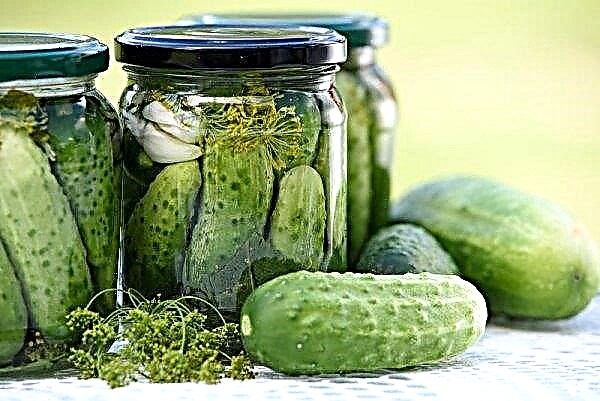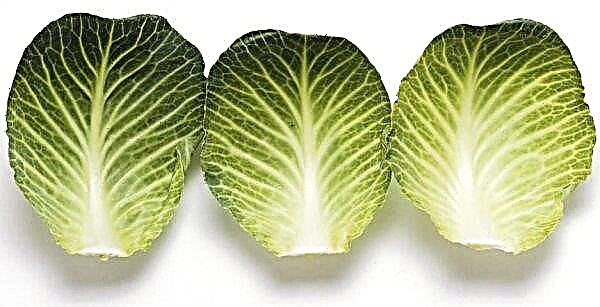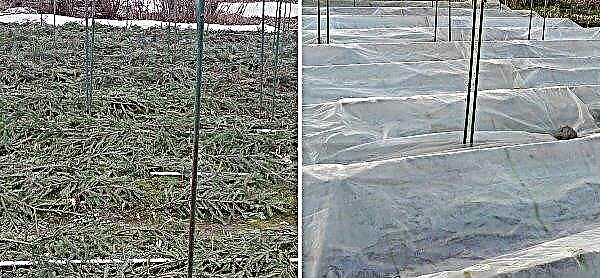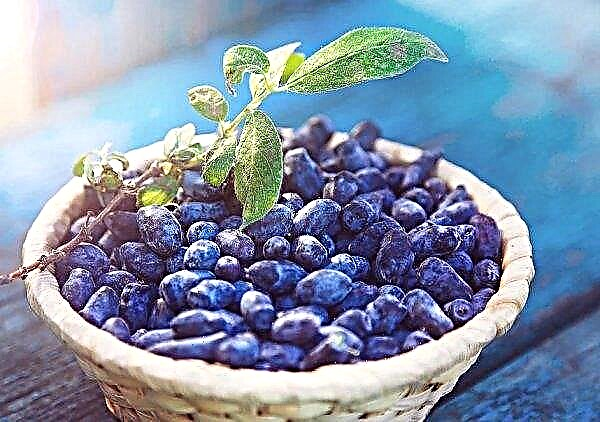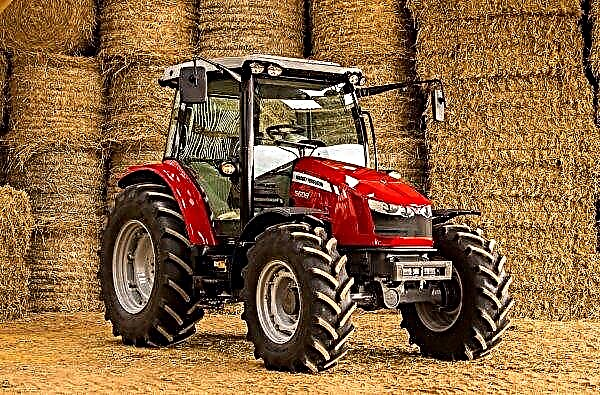Harvest of carrots, obtained under various growing conditions, is a matter of concern to agronomists and farmers. Currently, the expected yield of varieties that grow in open ground in temperate regions is about 60 tons per hectare. The maximum yield reaches 100 tons per 1 ha. About what you need to do to collect a higher yield from your site, read the review.
Average harvest from 1 hundred parts
From 1 hundred parts, you can collect from 0.5 to 1 ton of crop. At the same time, productivity depends on climatic factors, soil fertility, its aeration and crop care. So, to compare growth and yield, carrots were planted on 2 ridges. On one of them the best aeration conditions were created.
As a result, the following results were obtained:
- the weight of root crops on an improved ridge is 1.9 times higher;
- carrot length - 1.8 times;
- the length of the tops is 1.6 times;
- a higher rate of photosynthesis was noted.
Important! In too hot climates, carrots tend to form very small root crops.
This is why the average values do not accurately convey the possible yield for your site. You will need to consider many factors.
How to increase carrot yield
Farmers' access to certified seeds, improved soil preparation, application of the recommended dose of seeds and fertilizers, as well as the quality of the processing of crops are the main factors that can increase carrot production. Even the depth of seed placement can affect yield.
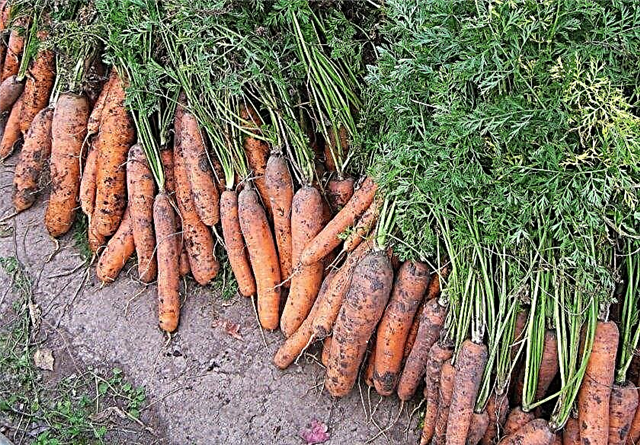
So, a study at 14 sites in Canterbury (United Kingdom) in 2013 showed that shallow sowing (depth 18 mm) yielded 145 root crops / 1 m², and at a depth of 26 mm the yield was 116 pcs / 1 m². Unfortunately, farmers do not publish accurate data on the influence of various factors on productivity in the CIS.
The most productive varieties
In the world there are more than 700 varieties of carrots. Choosing the best ones is quite difficult. This will depend on the soil and climatic conditions of the region.
Carrots grow on 4 soil types:
- sandy loamy soil - 90% of varieties grow in it;
- rocky soil;
- clay soil;
- red and black african soils.
These types of soils preserve water and nutrition in different ways, so each of them has its own varieties. In loamy soils familiar to us, root crops with small sizes grow.
We present to your attention the best varieties of carrots:
- Nantes Carrot (Nantes Type) is the best and most popular type. To it, the most varieties of varieties were created that are grown everywhere, including on heavy soils. These are cylindrical root vegetables of bright orange color with sweetish pulp. Length - 18 cm, diameter - 5 cm. The best varieties: Newmarket F1, Bolero, Tushton, Nairobi F1. The growing period is from 60 to 70 days.
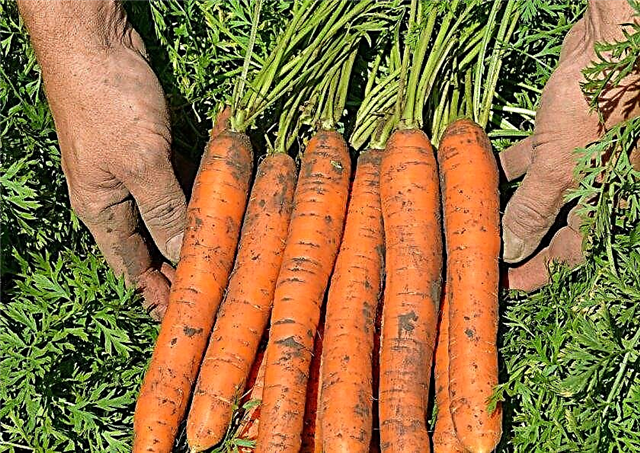
- Denver carrots (Danvers Type) - the variety most tolerant to different soils. Root crops of this variety have a conical shape with a wider top and narrow bottom, with a strong aroma. The growing season is 70 days. Length - up to 18 cm, diameter - 5 cm. The best grade is Danvers-126.
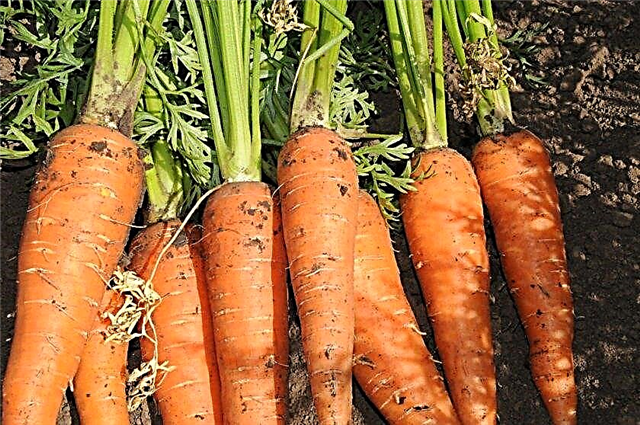
- Round carrots (Round types) - children call it "orange radish" for the similarity of forms. These are short rounded small root crops. Their diameter is 5 cm. It can be grown on heavy soils. Among the varieties, early types prevail. The most popular varieties are: Rondo, Parmex, Kundulus, Paris, Polar cranberries. Growing periods - from 40 to 50 days.

- Chantane (Chantenay types) - grows well on heavy and rocky soils. This is one of the oldest varieties. Shantans were grown long before the appearance of the Nantes variety. Its peculiarity and disadvantage is its extreme dependence on weather conditions. Root crops have the shape of a short cone, the width of which can reach 10 cm. The growing periods are from 60 to 70 days. The best varieties: Royal, Suprem.
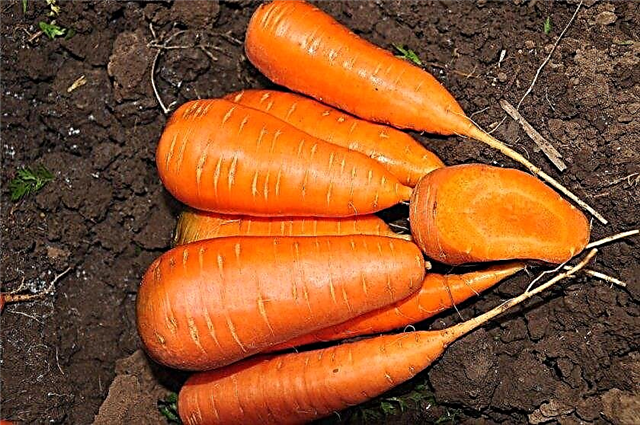
- Amsterdam (Amsterdam types) are fast-growing small root crops. Their length is less than 7 cm. Often they are grown in pots on the windowsill or in small greenhouses. Popular varieties: Sauco, Amsterdam Forsing, Prim F1. The growing period is from 35 to 50 days.

For greenhouses
Almost all varieties are suitable for growing in a greenhouse. Each person has his own preferences, especially if he grows vegetables for a long time.
But the most productive varieties, most gardeners consider:
- Nantes carrots and its varieties Nantes-4 and Nantes-14;
- Amsterdam forcing, including due to the high quality of root crops;
- Minicor - due to early maturity and very early terms for receiving products;
- of the long-cultivated varieties noted Vitamin 6, Red Giant, Losinoostrovskaya 13.
Did you know? The tops of carrots are edible, as are leafy vegetables. It can be used to make salads.
For open ground
A wonderful crop in the open field is obtained from many varieties.
Among them:
- early - Mistress, with a maturity of up to 90 days, Fun F1, a variety with excellent root crops weighing up to 200 g, Nantes-4;
- medium - Losinoostrovskaya, Bolteks, Samson, Karotel;
- late - The Red Giant, Queen of the Fall, Bayadere.

How to grow carrots
The success of cultivation and crop yield depend on the quality of the soil on which it is grown, so be sure to prepare it. Dig a site in late autumn or early spring. Remove the stones found and loosen thoroughly. If the soil is imperfect, add sand for friability or fertilizer to increase fertility. You can make mineral fertilizers in the soil a week before planting.
Sowing of seeds is carried out on a dry sunny day to a depth of 2-3 cm. Please note that for hybrid varieties it is important to observe the agricultural technology declared by the originator, including the depth of seed placement, row spacing and soil requirements. Sowing time in the open field is April-May. The seeding rate is 1–1.6 g / 1 m². Knowing the area of the plot, you can easily determine how many seeds you will need.Important! Do not spread manure into the soil. Carrots negatively perceive this type of fertilizer.
Carrot seeds germinate for a very long time. To make it easier to care for the crops, lighthouse crops - radishes or parsley are sown with them. They will indicate future beds. As soon as the seeds germinate, they are thinned out, leaving them at a distance of 2-3 cm from each other. In phase 3 of true leaves, thinning will be needed again.

Plants do not require special attention during growth. But you have to pay attention to watering. It is important to observe regularity. Irregular watering will lead to cracking of root crops. Too much leads to rotting or very hard fruit. Soak the soil deeply, about 1 time per week. Repeated watering should be performed if the soil has dried to a depth of 4 cm.
From June to July, harvesting begins, depending on the variety. The average yield is 4-8 kg per 1 sq. Km. m. Root crops are stored, cutting tops, in boxes with sand or peat. It is important that the roots do not touch. This will prevent infection if one of them starts to rot. Shelf life depends on the variety.
Did you know? You may have heard that if you eat a lot of carrots, your skin will turn yellow. It really is. The skin will turn yellow, mainly on the palms and feet. This phenomenon is called carotinemia. If you reduce the consumption of carrots, the skin will again become the same color.
Useful tips from experienced gardeners
Growing carrots at home can be an extremely interesting activity, even if you grow it only for personal consumption.
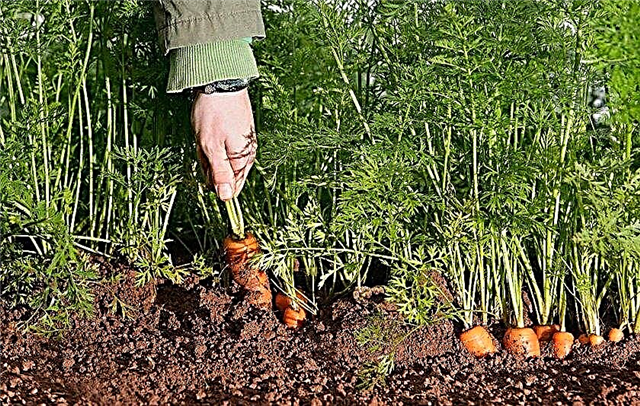
For beginners, tips from experienced farmers will be helpful:
- Choose a variety according to soil type and personal preference.
- Read the description and make sure that the variety will feel great in your climate.
- The best soil for growing carrots is moist, but well-drained and loose to a depth of 30 cm. Make sure that you have prepared just such.
- Remove all stones from the bed. They can deform root crops.
- Carrots feel bad in too acidic soil. Check the pH balance of the soil. It should be between 6 and 6.5 pH.
- Fertilize. Make sure there is not too much nitrogen in it. Urea can be added up to 100 g per 30 m².
- When you finish planting the seeds, cover them with a thin layer of mulch. It can be crushed bark or straw. This will keep the soil loose and moist.
- Be sure to kill the weeds.
- Thin plants continuously as they grow. Do not skip this step, otherwise the root crops will be small and thin.
Growing carrots is so easy that even children can handle it. But do not forget to use recommendations for the care of the variety. This will allow you to rely on the yield indicators declared by the manufacturer.








